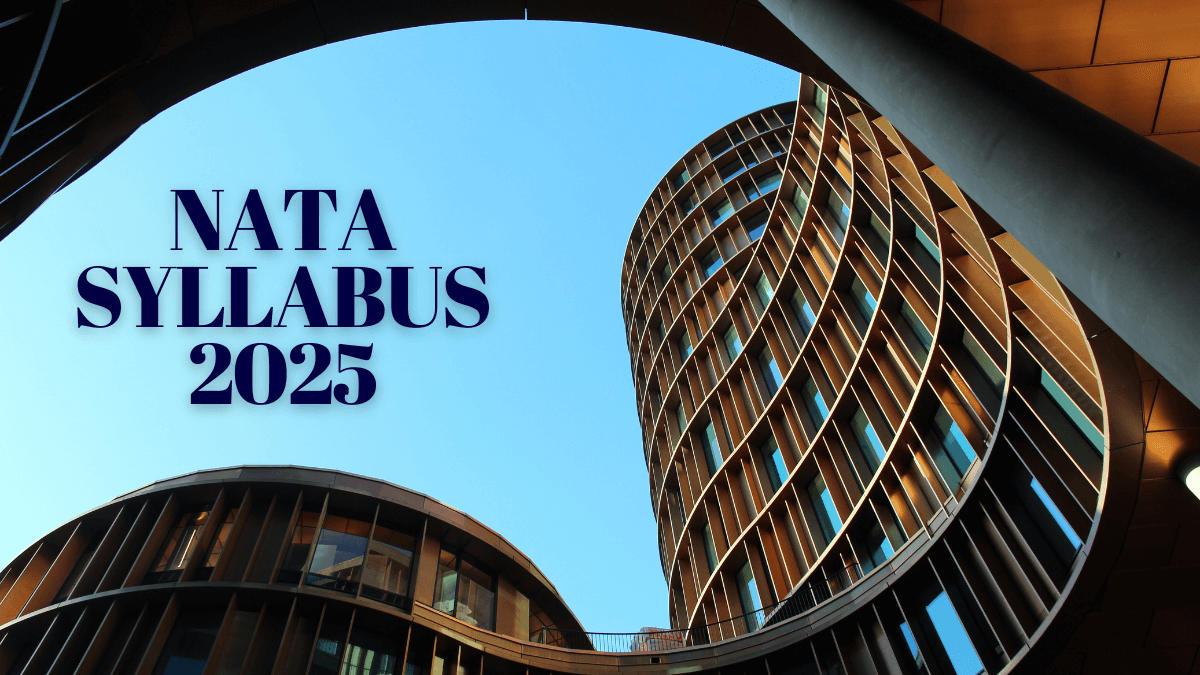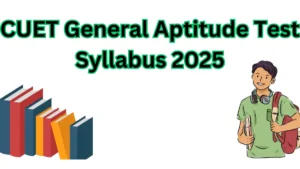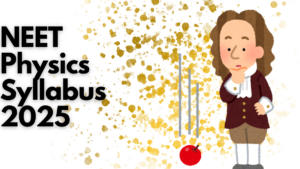Table of Contents
The Council of Architecture (CoA) will release the NATA Syllabus 2025 at the official website – https://www.nata.in/. The syllabus for NATA Exam 2025 includes questions on general aptitude, diagrammatic, verbal, and logical reasoning, G.K. Architecture & Design and other topics. Read the full article to learn about the new changes in the NATA 2025 Exam curriculum.
NATA Syllabus 2025
The NATA syllabus 2025 provides applicants with extensive information about the subjects, themes, and units that must be studied for the entrance examination. The National Aptitude Test in Architecture will be administered in CBT and offline mode. It should be mentioned that the syllabus will examine applicants based on their aptitude and drawing skills, therefore they must study properly for NATA 2025. Along with the syllabus, the official NATA 2025 exam pattern must be verified for preparation.
NATA Syllabus 2025
Candidates are recommended to carefully review the NATA 2025 syllabus to ensure that they are adequately prepared for the entrance examination. Read on to learn more about NATA Syllabus 2025.
| NATA Syllabus overview | |
| Particulars | Details |
| Exam Name | National Aptitude Test in Architecture (NATA) |
| Con | Council of Architecture |
| Mode |
Computer-Based and Offline Test
|
| Duration |
3 Hours
Part A – Drawing and Composition Test – 90 Minutes Part B – MCQs – 90 Minutes |
| Medium |
English and Hindi
|
| Sections |
Part A – Drawing and Composition Test
Part B – MCQs |
| Number of Questions | 48 |
NATA Syllabus 2025
The aptitude portion will examine your overall mathematical, verbal, and drawing knowledge.
| Part A – Drawing and Composition Test | |
| Sections |
Details
|
|
A1 – Composition and Colour Test
|
Creating suitable compositions for various situations and colouring them appropriately. Re-arranging various shapes in a visually appealing manner and colouring it suitably. |
|
A2 – Sketching and Composition (Black and White)
|
Ability to draw, visualize, and depict a situation, involving buildings/its components, people, environment, products with an understanding of scale, proportions, textures, shades and shadow etc. |
|
A3 – 3D Composition
|
Creating interesting 3D compositions for the given situation using the provided kit. |
| Part B – MCQs | |
|
Visual Reasoning –
|
Ability to understand and reconstruct 2D and 3D composition, knowledge about its composition and technical concepts. |
| G.K. Architecture & Design – | General awareness of architecture and design, current issues, recent episodes etc., Knowledge about important buildings, historical progression, innovation in materials and construction technology. |
|
Logical Derivation –
|
Ability to decode a situation, composition, context and generate meaning. Understanding the minute information hidden in a particular situation and concluding. |
|
Numerical Ability
|
Basic Mathematics and its association with creative thinking. To unfold a space with use of geometry. |
|
Language Interpretation
|
Ability to correctly & logically generate the meaning of words, and sentences, and understand English grammar. |
| Design Thinking | Ability to understand semantics, metaphors, problem identification and definition, and analysis of a given situation. |
|
Design Sensitivity
|
Ability to observe record and analyze, people, space, products, and environment. Critical thinking, reasoning and ability to identify subtle communications. |
NATA Syllabus 2025
NATA Maths Syllabus
Algebra
Definitions of A. P. and G.P.; General term; Summation of first n-terms of series; Arithmetic/Geometric series, A.M., G.M. and their relation; Infinite G.P. series and its sum
Logarithms
Definition; General properties; Change of base.
Matrices
Concepts of m x n, real matrices, operations of addition, scalar multiplication and multiplication of matrices. Transpose of a matrix. Determinant of a square matrix. Properties of determinants (statement only). Minor, cofactor and adjoint of a matrix. Nonsingular matrix. The inverse of a matrix. Finding the area of a triangle. Solutions of system of linear equations. (Not more than 3 variables).
Trigonometry
Trigonometric functions, addition and subtraction formulae, formulae involving multiple and submultiple angles, general solution of trigonometric equations. Properties of triangles, inverse trigonometric functions, and their properties.
Coordinate geometry
Distance formula, section formula, area of a triangle, condition of collinearity of three points in a plane. Polar coordinates, the transformation from Cartesian to polar coordinates and vice versa. Parallel transformation of axes, the concept of locus, elementary locus problems. The slope of a line. Equation of lines in different forms, angle between two lines. Condition of perpendicularity and parallelism of two lines. Distance of a point from a line. Distance between two parallel lines. Lines through the point of intersection of two lines. Equation of a circle with a given centre and radius. A condition that a general equation of second degree in x, y may represent a circle. Equation of a circle in terms of endpoints of a diameter. Equation of tangent, normal and chord. Parametric equation of a circle. The intersection of a line with a circle. Equation of common chord of two intersecting circles.
3-Dimensional Co-ordinate geometry
Direction cosines and direction ratios, the distance between two points and section formula, equation of a straight line, equation of a plane, a distance of a point from a plane.
Theory of Calculus
Functions, the composition of two functions and inverse of a function, limit, continuity, derivative, chain rule, derivatives of implicit functions and functions defined parametrically. Integration as a reverse process of differentiation, indefinite integral of standard functions. Integration by parts. Integration by substitution and partial fraction. Definite integral as a limit of a sum with equal subdivisions. The fundamental theorem of integral calculus and its applications. Properties of definite integrals. Formation of ordinary differential equations, solution of homogeneous differential equations, separation of variables method, linear first-order differential equations.
Application of Calculus
Tangents and normals, conditions of tangency. Determination of monotonicity, maxima, and minima. Differential coefficient as a measure of rate. Motion in a straight line with constant acceleration. Geometric interpretation of definite integral as area, calculation of area bounded by elementary curves and Straight lines. Area of the region included between two elementary curves.
Permutation and combination
Permutation of n different things taken r at a time. Permutation of n things not all different. Permutation with repetitions (circular permutation excluded). Combinations of n different things taken r at a time. Combination of n things not all different. Basic properties. Problems involving both permutations and combinations.
Statistics and Probability
The measure of dispersion, mean, variance and standard deviation, frequency distribution. Addition and multiplication rules of probability, conditional probability and Bayes’ Theorem, independence of events, repeated independent trails and Binomial distribution.
NATA Drawing Syllabus
- Understanding of scale and proportion of objects,
- building forms and elements,
- geometric composition,
- Conceptualization and Visualization through structuring objects in memory.
- shape, aesthetics, colour texture, harmony, and contrast.
- Drawing of patterns – both geometrical and abstract.
- Generating plan, elevation and 3D views of objects. Creating 2-D and 3-D compositions using given shapes and forms.
- Form transformations in 2D and 3D like union, subtraction, rotation, surfaces, and volumes.
- Perspective drawing, Sketching of urbanscape and landscape, Common day-to-day life objects like furniture, equipment, etc from memory.
NATA General Aptitude Syllabus
Sets and Relations
The idea of sets, subsets, power set, complement, union, intersection and difference of sets, Venn diagram, De Morgan’s Laws, Relation and its properties. Equivalence relation — definition and elementary examples.
Mathematical reasoning
Statements, logical operations like and, or, if and only if, implies, implied by. Understanding of tautology, converse, contradiction, and contrapositive
Objects
Texture related to architecture and the built environment. Interpretation of pictorial compositions, Visualizing three-dimensional objects from two-dimensional drawing. Visualizing different sides of 3D objects. Analytical reasoning, mental ability (visual, numerical and verbal), General awareness of national/ international architects and famous architectural creations.
NATA Paper Pattern
| NATA Paper Pattern – Number of Questions | |
| Part A – Drawing and Composition Test | Part B – MCQs |
| A1 – 1 Question – Composition and Colour A2 – 1 Question – Sketching and Composition (Black and White) A3 – 1 Question – 3D Composition |
B1 – 30 Questions B2 – 15 Questions |
| NATA 2025 Exam Pattern – Marking Scheme | |
| Part A – Drawing and Composition Test | Part B – MCQs |
| A1 – 1 Question – Composition and Colour – 25 marks A2 – 1 Question – Sketching and Composition (Black and White) – 25 marks A3 – 1 Question – 3D Composition – 30 marks |
B1 – 30 Questions x 2 marks – 60 marks B2 – 15 Questions x 4 marks – 60 marks |



 CUET General Test Syllabus 2025, Downloa...
CUET General Test Syllabus 2025, Downloa...
 NTA NEET Chemistry Syllabus 2025 Out, Ch...
NTA NEET Chemistry Syllabus 2025 Out, Ch...
 NEET Physics Syllabus 2025, Check Class ...
NEET Physics Syllabus 2025, Check Class ...









